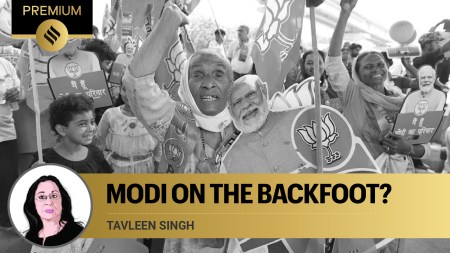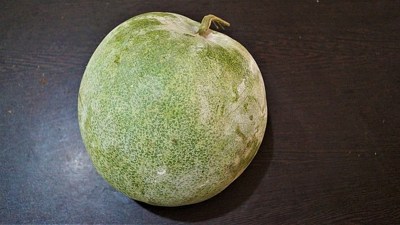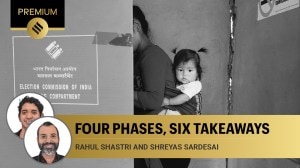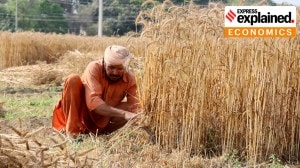- India
- International
UPSC Key | 29th April, 2024 — Global Plastics Treaty, Soil health, NEER, REER and more
Exclusive for Subscribers from Monday to Friday: How are Global Plastic Treaty and Corporate Governance Charter relevant to the UPSC Exam? What significance do topics like NEER and electric propulsion system for warship have for the preliminary and main exams? You can learn more by reading the Indian Express UPSC Key for April 29, 2024.
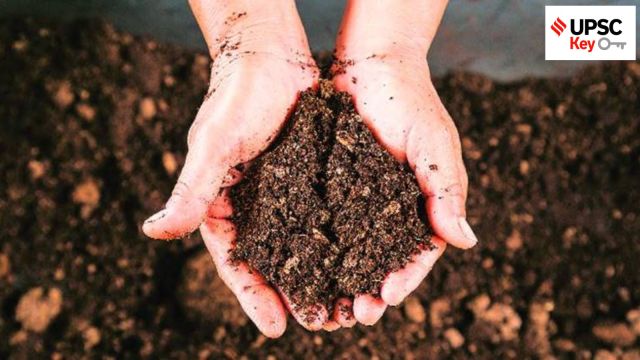 The issue of harming the planet by inappropriate policies has remained largely unaddressed. Know more in our UPSC Key. (Representational Image)
The issue of harming the planet by inappropriate policies has remained largely unaddressed. Know more in our UPSC Key. (Representational Image)Important topics and their relevance in UPSC CSE exam for April 29, 2024. If you missed the April 26, 2024 UPSC CSE exam key from the Indian Express, read it here.
🚨 The Indian Express UPSC Essentials brings to you the April edition of its monthly magazine. Click Here to read. Share your views and suggestions in the comment box or at manas.srivastava@indianexpress.com🚨
The Ideas Page
Healing the soil
Syllabus:
Preliminary Examination: General issues on Environmental Ecology, Biodiversity and Climate Change – that do not require subject specialisation.
Mains Examination: GS-III: Conservation, environmental pollution and degradation, environmental impact assessment.
What’s the ongoing story- Ashok Gulati writes: India, with only 2.4 percent of the world’s geographical area, 4 percent of global freshwater resources, and 18 percent of the world’s population, is under huge stress, be it its soils, water, air (GHG emissions) or biodiversity.
Prerequisites:
— What are the major outcomes of the COP28?
— What is the PM-Garib Kalyan Yojna?
— What is the Green Revolution?
— What are the chemical fertilizer subsidies?
— What is soil degradation?
Key takeaways:

— Ashok Gulati writes: “ Agriculture was brought into the Conference of Parties (COP) agreement for the first time in COP 28, Dubai. However, India didn’t sign it.”
— “ The demands for feeding the rising human population are responsible for much of the biodiversity loss on this planet.”
— “As Norman Borlaug, the father of the Green Revolution, once said, this planet can four billion people at the most on its own. If science had not come to rescue the situation, many would have starved to death.”
— “The issue of harming the planet by inappropriate policies has, however, remained largely unaddressed. For example, the policy of heavily subsidising the use of chemical fertilisers, especially urea, has led to skewed use of nitrogen (N), phosphate (P) and potash (K).”
— “This has led to a reduced level of Soil Organic Carbon (SOC). More than 60 percent of soils have SOC of 0.5 level. (Ideal: 1.5 to 2 percentage).”
— “Our soils are literally in the ICU, but our policymakers appear to be blind to it.”
— “Depleting groundwater level in Punjab. Haryana, and Rajasthan is largely because of free power for irrigation, minimum support prices and open-ended procurement of paddy (rice).”
— “These policies are also leading to the loss of crop diversity. For example, in 1960 in Punjab, only 4.8 per cent of the cropped area was under rice. Today, it is more than 40 per cent, displacing maize, millets, pulses and many oilseeds.”
— “Unless we change our policies that are peasant-positive but also planet-positive, we will be committing a crime towards our children and grandchildren.”
For Your Information:
— M Venkaiah Naidu writes: “A key element of sustainable food production is healthy soil because nearly 95 percent of global food production depends on soil. The current status of soil health is worrisome.”
— According to “The State of the World’s land and Water Resources for food and Agriculture: Systems at Breaking Point (SOLAW 2021)” report, “Climate change has increased pressure on rain-fed and irrigation production over and above the environmental consequences of decades of unsustainable use.”
Points to Ponder:
— What is the role of UN Convention to Combat Desertification(UNCCD)?
— What are the government’s Agro-food policies for protecting Soil, Water, Air and Biodiversity (SWAB)?
— Holistic plan to tackle climate change.
Post Read Question:
Prelims
Which organisation has published the State of the World’s land and Water Resources for food and Agriculture: Systems at Breaking Point (SOLAW 2021) report?
(a) Food and Agriculture Organisation
(b) World Bank
(c) United Nations Environment Programme
(d) UN Convention to Combat Desertification
Mains
Evaluate the significance of a collaborative approach in mitigating soil degradation caused by anthropogenic factors and climate change. Provide a critical analysis with suitable examples.
Other Important Articles Covering the same topic:
M Venkaiah Naidu writes: Without soil conservation, there is no food security
Explained
Global Treaty on Plastic Waste
Syllabus:
Preliminary Examination: Current events of national and international importance, General issues on Environment.
Mains Examination: GS-II, GS-III, Environment, environmental pollution and degradation, Bilateral, regional and global groupings and agreements involving India and/or affecting India’s interests,
What’s the ongoing story- Plastic waste is everywhere, from the peak of Mount Everest to the floor of the Pacific Ocean, inside the bodies of animals and birds, and in human blood and breast milk. On Tuesday (April 23), thousands of negotiators and observers from 175 countries arrived in Ottawa, Canada, to begin talks regarding the very first global treaty to curb plastics pollution.
Prerequisites:
— What are the different types of plastic waste?
— Read about plastic pollution and its impact.
— What is the Paris Agreement?
— Important Terms to Know: Virgin Plastic, Single-Use Plastic, Extended producer responsibility.
Key takeaways:
— Since the 1950s, plastic production across the world has skyrocketed. It increased from just 2 million tonnes in 1950 to more than 450 million tonnes in 2019. If left unchecked, the production is slated to double by 2050, and triple by 2060.
— According to a 2023 study published by The Lancet. About 400 million tonnes of plastic waste is generated annually, a figure expected to jump by 62% between 2024 and 2050.
— Much of this plastic waste leaks into the environment, especially into rivers and oceans, where it breaks down into smaller particles (microplastic or nanoplastic). These contain more than 16,000 chemicals which can harm ecosystems and living organisms, including humans.
— Plastic production and disposal are also contributing to climate change. According to a report by the OECD, in 2019, plastics generated 1.8 billion tonnes of GHG emissions — 3.4% of global emissions.
— While none of the treaty’s details have currently been finalised, experts believe that it can go beyond just putting a cap on plastic production in UN member states. The treaty can theoretically lay out guidelines on how rich nations should help poorer ones meet their plastic reduction target.
— However, treaty negotiations, so far, have been deeply polarising. Since the first round of talks in Uruguay in November 2022, oil-producing nations like Saudi Arabia, Russia, and Iran have opposed plastic production caps, and are using myriad delay tactics (like arguing over procedural matters) to derail constructive dialogues.
Points to Ponder:
— Why is a global plastics treaty needed?
— What can the global plastics treaty entail? What are the roadblocks to the treaty?
—What are the challenges associated with plastic waste management in India?
— What are the measures taken by the Indian government to curb plastic pollution?
(Thought process: Read about the Plastic Waste Management Rules, India Plastics Pact, National Dashboard on Elimination of Single-Use Plastic and Plastic Waste Management, Project REPLAN and other initiatives taken by the government)
— What is the High-Ambition Coalition?
Post Read Question:
Prelims
In India, ‘extend producer responsibility’ was introduced as an important feature in which of the following? (2019)
(a) The Bio-medical Waste (Management and Handling) Rules, 1998
(b) The Recycled Plastic (Manufacturing and Usage) Rules, 1999
(c) The e-Waste (Management and Handling) Rules, 2011
(d) The Food Safety and Standard Regulations, 2011
Mains
“Although plastic is a cheap and versatile material, with a wide variety of applications, its widespread use has led to a crisis.” Explain.
Other Important Articles Covering the same topic:
Plastic treaty talks: What do countries, firms want?
Why most plastic can’t be recycled
How the rupee has ‘strengthened’ under Modi government
Syllabus:
Preliminary Examination: Current events of national and international importance.
Mains Examination: GS-III: Indian Economy and issues relating to planning, mobilization, of resources, growth, development and employment.
What’s the ongoing story- Between April-end 2014 and now – roughly the time the Narendra Modi government has been in office – the rupee has depreciated by 27.6% against the US dollar, from Rs 60.34 to Rs 83.38. That’s marginally higher than the 26.5% from April-end 2004 to April-end 2014: The rupee fell from 44.37 to 60.34 to the dollar during that period when the previous Congress-led United Progressive Alliance (UPA) was in power.
Prerequisites:
— What is Currency depreciation?
— What do you understand by Rupee depreciation?
— Appreciation vs Depreciation of Currency-Compare and Contrast
— What is the difference between depreciation and devaluation?
Key takeaways: Harish Damodran writes-
— As India engages in global trade, the strength or weakness of the rupee is a function of the exchange rate with the US dollar and other global currencies.
— The rupee’s “effective exchange rate” or EER is an index of the weighted average of its exchange rates vis-a-vis the currencies of India’s major trading partners. The currency weights in the index are derived from the share of individual countries in India’s total foreign trade. There are two measures of EER, nominal and real.
— Nominal EER: The RBI has constructed NEER indices of the rupee against a basket of six and also of 40 currencies. The NEER indices are with reference to a base year value of 100 for 2015-16: Increases indicate the rupee’s effective appreciation against these currencies and decreases point to overall exchange rate depreciation. The NEER does not factor in inflation, which reflects changes in the internal value of the rupee.
— Real EER or REER: The REER is basically the NEER that is adjusted for the inflation differentials between the home country and its trading partners. If a country’s nominal exchange rate falls less than its domestic inflation rate – as with India – the currency has actually appreciated in “real” terms.
— Any increase in REER means that the costs of products being exported from India are rising more than the prices of imports into the country. That translates into a loss of trade competitiveness – which may not be quite a good thing in the long run.
Points to Ponder:
— What is the difference between Nominal EER (NEER) and Real EER (REER)?
— What is the relationship between the exchange rate and imports/ exports?
— What are the factors that determine exchange rates?
— What do you understand by the exchange rate regime? What are the different types of exchange rate regimes?
— What is consumer price index (CPI)?
Post Read Question:
Which one of the following is not the most likely measure the Government/RBI takes to stop the slide of the Indian rupee? (2019)
(a) Curbing imports of non-essential goods and promoting exports
(b) Encouraging Indian borrowers to issue rupee-denominated Masala Bonds
(c) Easing conditions relating to external commercial borrowing
(d) Following an expansionary monetary policy
Other Important Articles Covering the same topic:
Explained: Making sense of exchange rate
Explain Speaking | Forex reserves & rupee’s exchange rate: what are they and how are they related?
Behind the cannibal stereotype: Why Joe Biden’s comments offended Papua New Guinea
Syllabus:
Preliminary Examination: Current events of national and international importance.
Mains Examination: GS-I, GS-II, History of the World, Issues related SCs and STs.
What’s the ongoing story- Papua New Guinea Prime Minister James Marape, last week, criticised United States President Joe Biden for implying that his uncle was eaten by cannibals in New Guinea during World War II.
Prerequisites:
— Who are tribes?
— Who are called Primitives?
— What is cannibalism?
Map Work: Location of Papua New Guinea on the world map.
Key takeaways:
— According to a 2006 Smithsonian Magazine article, when a member of the Korowai tribe of New Guinea dies, his or her male relatives kill the khakhua, or witches responsible (the dying person names him). And then they eat him.
— Cannibalism in New Guinea has also been documented among the Fore people who live in the highlands of Papua New Guinea. The Fore believed it was much better that the body was eaten by people who loved the deceased than by worms and insects.
— In both the above cases, consumption of human flesh was a part of social custom, which helped the tribes make sense of the inexplicable, or process difficult emotions.
— In Darwinian terms, it is fairly simple to explain the cannibal taboo. Eating one’s own is looked down upon as it impacts the health of the species. If, as Darwin postulated, all species have a fundamental imperative towards survival and propagation, the practice of cannibalism is directly antithetical to this.
— According to Palaeoanthripologist Carole A. Travis-Henikoff, “Starvation brings on ‘survival’ cannibalism.
— The ingestion of dead relatives is known as ‘endocannibalism’ or “funerary” cannibalism [like in the case of the Fore, an act of mourning].
—‘Exocannibalism’ refers to the eating of one’s enemies [like the Korowai, also known to address skewed sex ratios].
— ‘Religious’ cannibalism relates to the actual or simulated partaking of human flesh as part of a religious rite.”
Points to Ponder:
— Cannibalism as a tool of conquest and exclusion
— Major tribes of India and their location
— What is particularly vulnerable tribal group (PVTG) in India?
Post Read Question:
‘Korowai’ and ‘Fore’ are the tribes of which country?
(a) Syria
(b) Papua New Guinea
(c) Kenya
(d) Democratic Republic of Congo
Editorial
For Future Ready Seniors
Syllabus:
Preliminary Examination: Economic and Social Development.
Mains Examination: GS-II, Government policies and interventions, Welfare schemes for vulnerable sections of the population by the Centre and States and the performance of these schemes; mechanisms, laws, institutions and Bodies constituted for the protection and betterment of these vulnerable sections, Health, Human Resources.
What’s the ongoing story- Pallavi Gupta writes- “Lost in the din about India’s demographic dividend is the silently rising population of older people in the country. The number of persons above 60 years is set to more than double from 100 million in 2011 to 230 million in 2036, making up nearly 15 per cent of the total population. This is projected to further rise to 319 million by 2050, nearly one-fifth of the total population. Declining fertility rates and increasing life span are driving this transition”.
Prerequisites:
— What is the demographic dividend?
— What is the difference between demographic transition and demographic dividend?
— What are the provisions for the welfare of elderly people in the Indian Constitution?
Key takeaways:
— The average household size in India has reduced from 5.94 in 2011 to 3.54 in 2021. Households with smaller families and a growing number of older people, who may suffer from chronic illnesses, call for a reset of the health and social care system.
— Care for seniors at home is a growing concern as it oscillates between social care and health care, often blurring lines between the two. The changing family structure is paving the way for external assistance in caring for older people at home.
— According to a NITI Aayog report, healthcare offered at home can replace up to 65 per cent of unnecessary hospital visits and reduce hospital costs by 20 per cent.
— However, care practices at home are not well-defined and standardised. Caregivers who are well-trained and possess an empathetic outlook are in short supply, and often complain of being mistreated by families. There are no specific grievance redressal mechanisms. Currently, it is the private, for-profit sector that offers the bulk of these services.
— To better organise care at home, a few policy interventions are needed.
(i) First and foremost, recognise “home” as a place for providing care and as a “place of work” for caregivers.
(ii) Secondly, The terms of engagement and treatment protocols must be tailored to the home environment.
(iii) Thirdly, to meet the growing demand for trained caregivers, streamline their vocational training, nomenclature, roles, and career progression.
— The Ministry of Health and Family Welfare (MoHFW), Ministry of Social Justice and Empowerment (MSJE) and Ministry of Skill Development and Entrepreneurship (MSDE) have a pivotal role to play in the matter.
Points to Ponder:
— What is the Maintenance and Welfare of Parents and Senior Citizens (Amendment) Bill, 2019?
— How comprehensive a health support system is the need of the hour for senior citizens in India?
— What are the initiatives taken by the government to empower senior citizens?
(Thought process: Read about the Pradhan Mantri Vaya Vandana Yojana, National Social Assistance Programme, Rashtriya Vayoshree Yojana, Elder Line: Toll-Free Number for Elderly, SAMPANN Project, SAGE and SACRED Portal for Elderly)
— What is the Senior Care Aging Growth Engine (SAGE) Portal?
Post Read Question:
The performance of welfare schemes that are implemented for vulnerable sections is not so effective due to the absence of their awareness and active involvement at all stages of the policy process – Discuss. (2019)
Other Important Articles Covering the same topic:
Comprehensive health support system – need of the hour for senior citizens in India
No age restriction for health insurance now: All you need to know
Cries for Help
Syllabus:
Preliminary Examination: Current events of national and international importance
Mains Examination: GS-II: Issues relating to development and management of Social Sector/Services relating to Health, Education, Human Resources.
What’s the ongoing story- The alleged death by suicide of at least seven students, six of them girls, in different parts of Telangana after the declaration of intermediate (equivalent of Classes XI and XII) results is another grim reminder that despite several progressive interventions in recent years, much work needs to be done to alleviate the anxieties of the country’s youth.
Prerequisites:
— What is the New Education Policy (NEP), 2020?
— What is emotional well-being?
— What is the purpose of the Accidental Deaths & Suicides in India Report?
Key takeaways:
— In 2022 according to the NCRB data, over 13,044 Indian students ended their lives — 7.6 per cent of the total suicide fatalities in that year. The data shows a 70 per cent increase in the number of students who took their lives in the last decade.
— Suicidal behaviour is, of course, the culmination of several factors. It’s no secret, however, that competition pressures and burdens of parental expectations take a toll on the well-being of students.
— One of the objectives of NEP, 2020 is to design flexible evaluation mechanisms for school goers. Emotional well-being is a key part of the NEP’s thrust on creating an enabling atmosphere for students.
For Your Information:
— According to the National Crime Records Bureau in its Accidental Deaths & Suicides in India 2022 Report, as many as 154 farmers and daily-wage labourers die by suicide in India daily, mainly due to “family problems” and “illness”
— ‘Family Problems’ and ‘Illness’ were the major causes of suicides which accounted for
31.7% and 18.4% of total suicides respectively during 2022.
— The age group (18 -below 30 years) and persons of 30 years -below 45 years of age were the most vulnerable groups resorting to suicides. These age groups accounted for 34.6% and 31.8%
suicides respectively
Points to Ponder:
— What is the legal status of suicide in India?
— What are the reasons for increasing suicide cases in the Educational hub?
— What are the other findings of the NCRB report?
— What are the initiatives taken by the government to reduce suicides in India?
Post Read Question:
Highlight key strategies, beyond the New Education Policy, that the government should adopt to significantly reduce student suicide rates.
(Thought process: Highlight the objectives of NEP on mental and emotional wellbeing for students–point out other initiatives like Mental Healthcare Act, Manodarpan, Kiran– What else can be done?)
Other Important Articles Covering the same topic:
154 farmers, daily wagers die by suicide daily: NCRB report
Maharashtra tops in cases of suicide for ideological causes
Economy
CII launches charter for startups with focus on corporate governance
Syllabus:
Preliminary Examination: Current events of national importance and economy
Mains Examination: GS-III, GS-IV: Governance, Indian Economy
What’s the ongoing story– Industry body CII has launched a charter for startups that enlist voluntary recommendations on corporate governance keeping in view unique nuances to govern startups.
Prerequisites:
— What do you understand by the Corporate Governance Charter?
— What is corporate governance?
— What is CII?
Key takeaways:
— The Corporate Governance Charter also prescribes guidelines appropriate for startups based on the specific stages of their life cycle.
— “This charter is designed for entities incorporated under the Companies Act, 2013 only, and therefore the term ‘Startup’. However, entities which are in the nature of sole proprietorship, limited liability partnership, partnership may adopt similar structure/guidelines for corporate governance within their organization”, CII stated.
— The early adoption of good governance practices helps startups gain tangible and intangible benefits including long-term value creation, stakeholders’ trust, better access to finance from investors and banks, reduced reliance on promoters, effective organisational structures, and improved chances of long-term survival of the business, R Dinesh, President, CII said.
Points to Ponder:
— What is the significance of the Corporate Governance Charter in promoting transparency, accountability, and ethical practices in the corporate sector?
— Corporate governance and corporate ethics-Connect the dot
— Is corporate governance the same as corporate ethics?
— What is corporate social responsibility (CSR)?
— What do you understand by the term “good governance”?
— What is the Sevottam Model?
Post Read Question:
The Citizens’ Charter is an ideal instrument of organizational transparency and accountability, but it has its own limitations. Identify the limitations and suggest measures for greater effectiveness of the Citizens’ Charter. (2018)
What do you understand by the terms ‘governance’, ‘good governance’ and ‘ethical governance’? (2016)
Other Important Articles Covering the same topic:
Good Governance Day: Last-mile delivery, leaving no one behind is key to growth
Front Page
US rejects 1/3rd of MDH exports since October over salmonella
Syllabus:
Preliminary Examination: Current events of national importance and economy.
Mains Examination: GS-II, GS-III, Effect of policies and politics of developed and developing countries on India’s interests, Health, Economy.
What’s the ongoing story- The United States customs authorities refused 31 per cent of all spice-related shipments exported by Mahashian Di Hatti (MDH) Pvt Ltd over salmonella contamination in the last six months. The refusal rate since October 2023 has doubled from 15 per cent for all shipments sent in the year prior.
Prerequisites:
— What is Salmonella?
— What is ethylene oxide?
— Read about the FSSAI.
Key takeaways:
— The surge in refusal rate over salmonella contamination in recent months comes at a time when both Singapore and Hong Kong have suspended sales of certain MDH and Everest Food Products Pvt Ltd products after the alleged detection of a carcinogenic pesticide in spice mixes.
— When consumed, foods contaminated with the bacteria salmonella can cause a severe stomach infection that affects the intestinal tract if not cooked properly.
— “Salmonella contamination happens due to unhygienic practices. If you maintain hygiene practices right through the value chain, from harvesting to processing to packaging, you should not be getting salmonella,” a food safety expert said.
— Singapore ordered a recall of the Everest spice mix for containing high levels of ethylene oxide, which is unfit for human consumption and a cancer risk with long term exposure.
— A study by the US Department of Agriculture published in 2022 found that between 2002 and 2019, India had the most pathogen-related violations with 5,115 food import refusals out of over 22,000 pathogen and toxin violations that were identified, a share of 22.9 per cent. Mexico came in second with a 13.9 per cent share followed by Vietnam with an 8.6 per cent share.
For Your Information:
— Salmonella is a group of bacteria that can cause food-borne illnesses known as salmonellosis. The World Health Organisation (WHO) identifies Salmonella as one of four key global causes of diarrhoeal diseases. Individuals who develop salmonellosis may show symptoms such as nausea, diarrhoea, fever, and abdominal cramps 12-72 hours after contracting the infection.
Do you know:
India is the world’s largest producer, consumer and exporter of spices.
Points to Ponder:
— What are the causes of concern with regard to Salmonella? How it can affect human health?
— How can ethylene oxide impact health?
— Where is ethylene oxide banned?
— What are the challenges associated with food safety in India?
Post Read Question:
Consider the following statements with regard to ethylene oxide?
1. It is a colourless, highly flammable and very reactive gas that kills bacteria and viruses only.
2. It is a pesticide that has been classified as a Group 1 carcinogen.
How many of the statements given above are correct?
(a) Only one
(b) Only two
(c) Both 1 and 2
(d) None
Other Important Articles Covering the same topic:
Explained: MDH masalas in US have tested positive for Salmonella. What is it?
Govt & Politics
India, UK closer to pact on electric propulsion system for warships
Syllabus:
Preliminary Examination: Current events of national and international importance.
Mains Examination: GS-II, GS-III, International Relations, Security
What’s the ongoing story- The Centre and the UK government are discussing the possibility of an agreement to develop an electric propulsion system in India to power domestic warships, The Indian Express has learnt.
Prerequisites:
— What is electric propulsion system?
— What are war ships?
— What is the Next-Generation Destroyer (NGD)?
Key takeaways:
— Indian warships are currently powered by diesel engines, gas turbines or steam turbines. The electric propulsion capability is meant to power larger warships with a displacement of over 6,000 tonnes.
— Once the agreement is signed, officials said, the key capability will be developed through a collaboration between the UK’s GE Power Conversion and state-owned Bharat Heavy Electricals Ltd (BHEL).
— Both companies have signed a memorandum of understanding on developing the ‘Integrated Full Electric Propulsion System’.
For Your Information:
— India and UK are planning to sign the Free Trade Agreement, it would be the first full fledged deal with a western country that would see deeper economic integration with a major global service sector leader.
— The bilateral trade between India and the UK increased to $20.36 billion in 2022-23 from $17.5 billion in 2021-22.
Points to Ponder:
— What are the other areas of collaboration and cooperation between India and UK?
— Significance of UK in the light of geopolitical unrest
— What is the ‘Roadmap 2030’?
— Significance for takling growing Chinese presence in the Indo-Pacific region.
Post Read Question:
How will the India-UK pact on electric propulsion systems enhance Indian warships capabilities?
Other Important Articles Covering the same topic:
Rajnath’s visit to UK: Progress in talks to get key tech for warships
What is the proposed India-UK Free Trade Agreement, and why the UK may benefit more
UPSC Ethics and Essay Snippet
‘Wordly Wise’ from The Editorial Page
“Here is my first principle of foreign policy: Good government at home.”- William E Gladstone
(Thought Process: The domestic affairs of a nation play a significant role in shaping its foreign policy. How do they provide the impetus for the state to determine its foreign policy or simply how are they interdependent? How does the domestic political climate shape external relations? Also, do you agree that we are all judged by what we do at home and not what we say or do abroad? Moreover, why or why not should foreign and domestic policies be distinguished? Ponder on the points like ‘Good governance’, the importance of globalisation, international institutions, bilateral relations, examples of domestic issues of global importance etc. Elaborate with reference to essays and GS-II.)
May 16: Latest News
- 01
- 02
- 03
- 04
- 05











